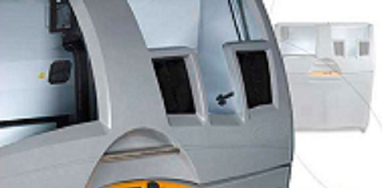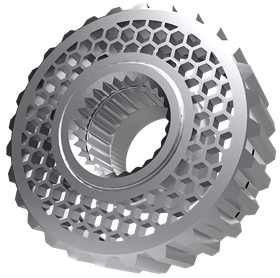Make 3D Printing seem like a bigger sci-fi to yourself, because it is like that. 3d printing metal happens to be the most important part there. 3D printing from metal is possible. Most commonly, it is printed from conventional 440 stainless steel with bronze. If we do not talk about detailed printing, which is already very expensive, so it is necessary to realize that the printing itself is very rough and does not achieve the quality of plastics or polyamides, but has one indisputable advantage that it polishes in a ball washer and then galvanically applied other interesting metals. This achieves a very lucrative appearance and is the ideal option for low-priced luxury goods.
It is important to maintain a minimum wall thickness of about 2mm and not to go below 0.8mm in detail. If you are interested, more information about printing from metal we have prepared for you on the blog 3 D printing from metal materials

Price of metallic 3D printing
In 3D printing from metal, the price is determined by two factors: the envelope of the object and the volume of consumed material. The minimum order price for printing from metal is 1000 dollars. It is optimal to hold the model in 10cm3 material. Then the price quickly exceeds 2000 dollars.
Facts behind 3D Printing
Most metal parts that customers require to produce 3D printing do not conform to the requirements of additive manufacturing. The design of the parts corresponds to its function, but the shape is not suitable for 3D printing. These aspects lead to the production of supports which slow down the production process, make production more expensive and in most cases are difficult to remove. Another disadvantage of the support material is the resulting surface quality, which requires so-called post-processing machining and surface treatment.
Professionals deal with the issue of 3D printing of supporting elements in the article and propose solutions for their effective elimination. In general, the object is to design self-supporting structures or support structures which are part of a component, do not impair its function and can be easily removed or machined. If we have already mentioned machining, it is necessary to take into account that the machining of supports as an interrupted cut, which has a negative impact on the life of the cutting tools and so-called post-processing can in many cases be more expensive than 3D printing alone.
3D printing supports often do not actually “support” anything, but they have a cooling and fastening meaning, especially in a powder bed fusion process. In general, tensile stresses are applied at the site to prevent parts from tearing away from the substrate due to residual stress. The supports also provide heat dissipation from thermally insulated areas that would cool too slowly. However, this leads to subsequent removal of supports, machining and surface treatments.
The geometry of the support elements may have different shapes, such as thin columns, linear and supporting structures, or tree structures. More sophisticated and user-friendly software tools handle the generation of support elements. Supports can also be designed manually in CAD solutions. The case studies show how much supportive elements play in the 3D printing process.
Self-supporting construction
This case study is an example where support can be almost completely removed by careful component design. It is a reworked mount of the mountain bike saddle, where topological optimization was applied followed by design modification. Although the part is topologically optimized, its geometry is not suitable for 3D printing without supports. It was necessary to modify the design, adapt large overhangs and orient the part so that the protruding arms could be printed without supports. These cosmetic design changes were allowed according to customer requirements.




